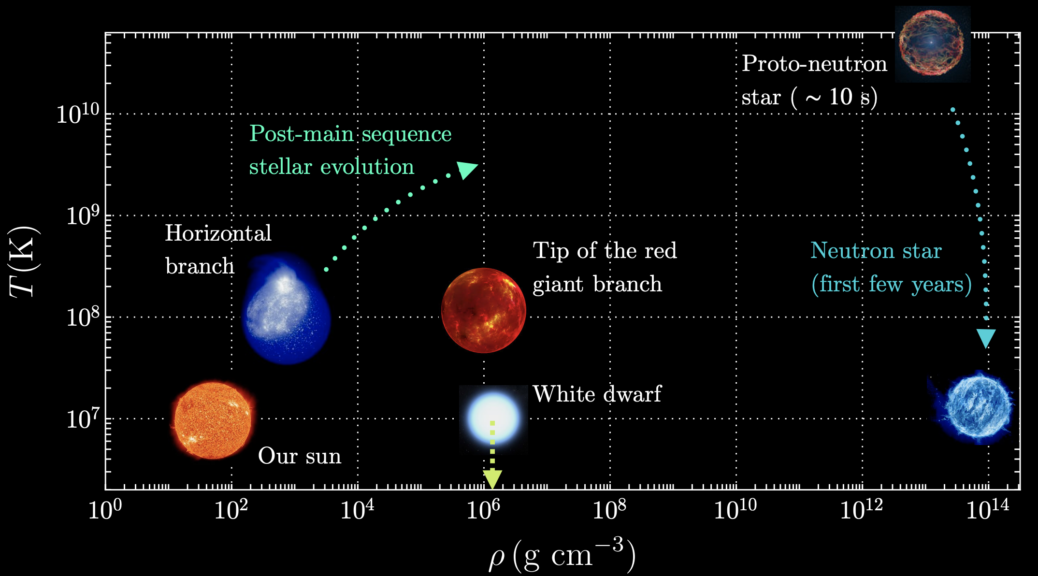
Stellar death
I gave a talk at the conference Light Dark World 2020 yesterday, about supernovas and light new particles. To introduce the topic, I mapped out various stages of stellar death on a plot of temperature (in degrees Kelvin — at these temperatures the same as degrees Celcius) vs. density (in grams per cubic centimeter, as is usual in astrophysics).
The reason I made this plot because I study the reactions that happen in the cores of these stars. To do that, it’s necessary to know how hot (and dense!) it is. The hotter it is, the more massive the particles that can be created.
The last stages of the lifetime of a star determine what remnant (if any!) is left — black holes, white dwarfs, or neutron stars. Via gravitational waves emitted by (binaries of) these remnants, we may therefore learn about stellar death.
Interesting, right?!
You can find the rest of my LDW2020 slides here. I wrote about related research in the previous post. Various popular physics articles have been written about my research on this theme; you can find a collection here (bottom of the page).